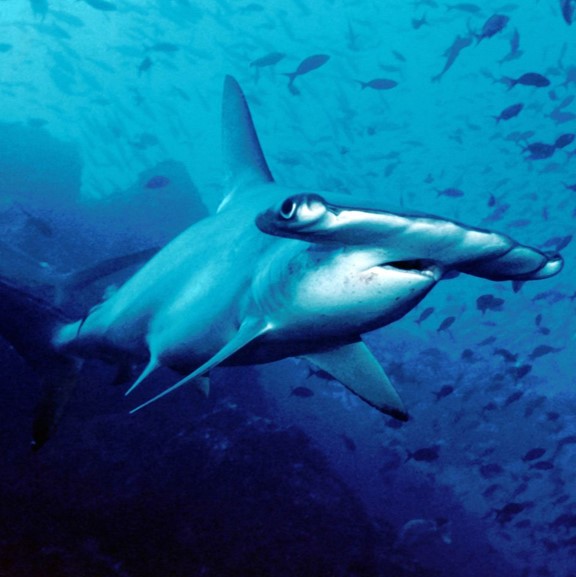
scalloped hammerhead

National Parks/ Sanctuaries
-
Common Names
scalloped hammerhead
Regions
MexicoBrazilCalifornia, United States
Population
200,000
Habitat
coastal regions, around coral reefs, and near seamounts and island chains
Weight(in lbs) and Life Span
150–340 pounds (68–1... and 20–30 years in the wild
Regions
Mexico, Brazil, California, United States, Ecuador, Hawaii, United States, Mozambique, South Africa, Costa Rica, Bangladesh, France, Guatemala, Lebanon, Myanmar, Israel, Australia, Albania, Gabon, Indonesia, Kenya, Congo, El Salvador, Angola, Brunei Darussalam, Egypt, Barbados, Colombia, Croatia, Mauritius, Greece, Cameroon, Ghana, Iraq, India, China, Djibouti, Italy, Jamaica, Japan, Dominican Republic, Honduras, Kuwait, Guyana, Malaysia, Uruguay, Senegal, Thailand, Togo, Philippines, Sierra Leone, Slovenia, Trinidad and Tobago, Morocco, Tanzania, Spain, Hong Kong, Peru, Qatar, Turkey, Bahrain, Portugal, Viet Nam, Puerto Rico, United Arab Emirates, Taiwan, Congo, Nigeria, Pakistan, Panama, Saint Lucia, Singapore, United States of America, United States, Oman, Suriname, Tunisia, Algeria, Saudi Arabia, Venezuela, Equatorial Guinea, Iran, Libya, Montenegro, Bonaire, Cabo Verde, South Korea, Curacao
The Scalloped Hammerhead is a large shark species easily recognized by the unique shape of its head, known as a "cephalofoil." This broad, flattened head is scalloped along the front edge, giving the species its name. Adults can reach lengths of 10–13 feet (3–4 meters) and weigh up to 340 pounds (154 kg). These sharks have a grayish-brown body, white underbelly, and are typically found in tropical and warm temperate seas. Scalloped Hammerheads are social animals and are often seen in large schools, particularly around seamounts and coastal areas. They play a key role in maintaining the balance of marine ecosystems by controlling prey populations.
Activity Instructions
- Draw the Animal: Use the next page to draw a picture of the animal. Use your imagination and make it colorful!
- Write an Essay: Write a short essay about the conservation efforts to save this animal. Here are some questions to guide you:
- Why is this species important in its ecosystem?
- What are the threats it faces, and how can we help?
- What do you find most interesting about this species?


